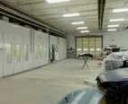What Happened to Gas Bag Vehicles?
In today's cars, we use a lot of different fuels, but gas it still #1 here in Chicago, IL and worldwide. The gasoline most of our cars run on today are stored securely in gas tanks for safety and overall efficiency. But many years ago, a  different form of gas was stored in bags atop vehicles and subsequently used to power itself. Check out this blog from CDE Collision Centers (Western) for some interesting facts about gas bag vehicles and their gaseous history.
different form of gas was stored in bags atop vehicles and subsequently used to power itself. Check out this blog from CDE Collision Centers (Western) for some interesting facts about gas bag vehicles and their gaseous history.
The very first gas bag vehicles were built during World War I became more popular during World War II in France, the Netherlands, Germany and the United Kingdom as a reaction to the shortage of gasoline. In addition to, buses and trucks were also equipped with the same technology. These vehicles consumed 'town gas' or 'street gas', which was a byproduct of the process of converting coal into cokes, which are used to make iron.
Today, vehicles powered via compressed natural gas (CNG) or liquefied petroleum gas (LPG) are practical and gaining in popularity. The fuel tanks have to be twice as large as a conventional gasoline fuel tank in order to get roughly the same range. But the fuel that was used on gas bag vehicles during WWI and WWII, was generally not compressed, which meant it had a much lower energy density than LPG or CNG.
The only way to get a reasonable range for the gas bag cars was to use a massive "fuel bag". Buses were better suited for this than passenger cars were, because they had enough room on the roof to accommodate a full-length gas storage bag sitting on roof rack.
Regular automobiles were equipped with a wooden framework that was connected to the roof and the reinforced bumpers of the car. Witnesses to gas bag vehicles as they passed by could clearly see how much fuel was left. The gas bag was fully inflated at the beginning of a trip, but deflated with every mile driven.
Most of the gas storage bags were manufactured out of silk or other types of fabrics and soaked in rubber. More affordable and easier to build than metal tanks, the gas bags were an ideal solution. They could also be fixed just like bicycle tires.
It will not shock anyone that gas bag vehicles are risky. Fire can cause a gas explosion and that's why people who were waiting for a ride on a gas bag bus were strongly urged not to smoke. Another risk was created by bridges and overhead obstacles.
Gas bag buses were still in operation in China through the 1990s until they just faded away--just like any airborne gas!
We strive to bring you relative content from CDE Collision Centers (Western) in Chicago , IL .
Sources: Tech News, AOL and Wikipedia






 different form of gas was stored in bags atop vehicles and subsequently used to power itself. Check out this blog from CDE Collision Centers (Western) for some interesting facts about gas bag vehicles and their gaseous history.
different form of gas was stored in bags atop vehicles and subsequently used to power itself. Check out this blog from CDE Collision Centers (Western) for some interesting facts about gas bag vehicles and their gaseous history.
Social